#i was so pleased to find the time capsule since i play on ps4 so theyre much fewer and farther between than on like. steam
Text
Playing subnautica again and struggling a lil bc I set rules that I wouldn't panic-cheat w console commands this time
so base building has been a lil slow but I'm having fun!! I thought it was high enough to not have a problem with a tube I wanted to build to my bedroom so I just stacked it on top like a lil attic instead
Also, I found a time capsule!!! There was a water filtration suit inside which is a massive boon for me bc I struggle keeping enough water, not so much with food
#I forgot the propulsion canon when i went to the aurora but ive gotten in via platforming before so nbd its not like i would be returning#so i didnt feel like making it anyways since i never use it after#i was so pleased to find the time capsule since i play on ps4 so theyre much fewer and farther between than on like. steam#i need a scanner room but i dont know if i want it to be connected to the main base or slightly separate#bc i also need to make a room for the alien containment chamber to hatch all the eggs ive been collecting#rp wise it would make sense as well for me to build a second moonpool when i make the prawn suit but#there's not really a benefit in terms only of gameplay bc usually ill just park one of them outside instead#subnautica
3 notes
·
View notes
Photo

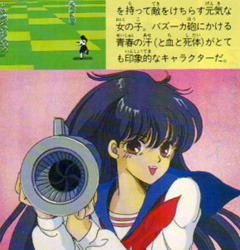


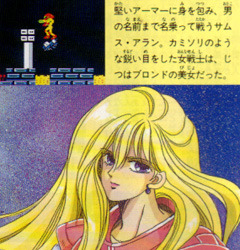
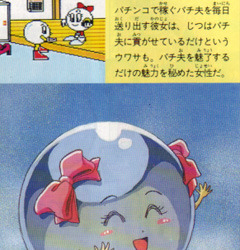
Gentlemen Prefer Pixels (Over Polygons)
Called me old-fashioned, but nothing’s sexier than a girl that’s a mystery. Blocky, abstract pixels make you wonder, whereas smoothly detailed polygons do not.
And the above, featuring interpretations of various leading ladies from various 8-bit games from an old issue of Famitsu, illustrates this point nicely. I’ve always had a thing for Samus, but it was kinda more fun when my imagination filled in the blanks.
I also kinda dig the pink and white color scheme for the armor she has here. Bonus points for not sexy-ing up Tyris Flare…
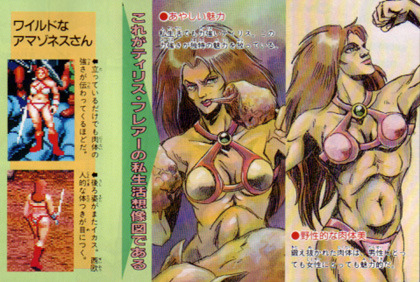
BTW, they’re from this old blog that hasn’t been updated in ages. Google Translate sez its aim was to transcribe 1000(!!!) issues of the classic Japanese game mag, and once again, I am saddened by my inability to understand Japanese.
I also have a new project; to archive the source, since info like this is fairly scare and blogs in general do not stick around forever. Oh, and I’d gladly accept anyone’s help towards this effort, cuz my hands are pretty full at the moment.
Speaking of archives, thank goodness for the Video Game Art Archive, which preserves illustrations found in old game manuals. Recently it began showcasing imagery found in the manual for Ballz, on old 16-bit fighter in which every character is made out of, you guessed it.
As it turns out, the Japanese edition has its own unique interpretations of abstract game graphics…
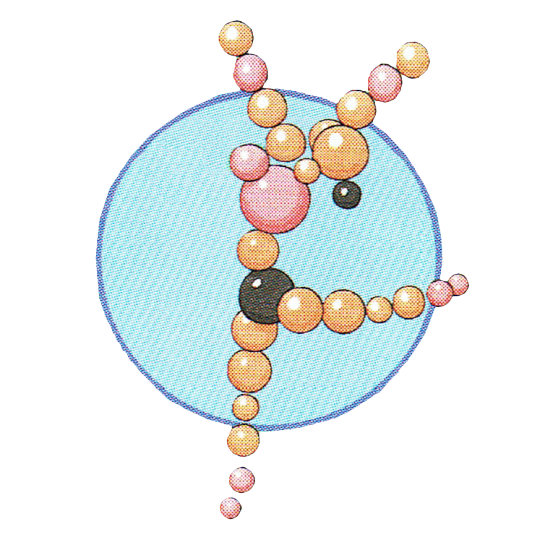
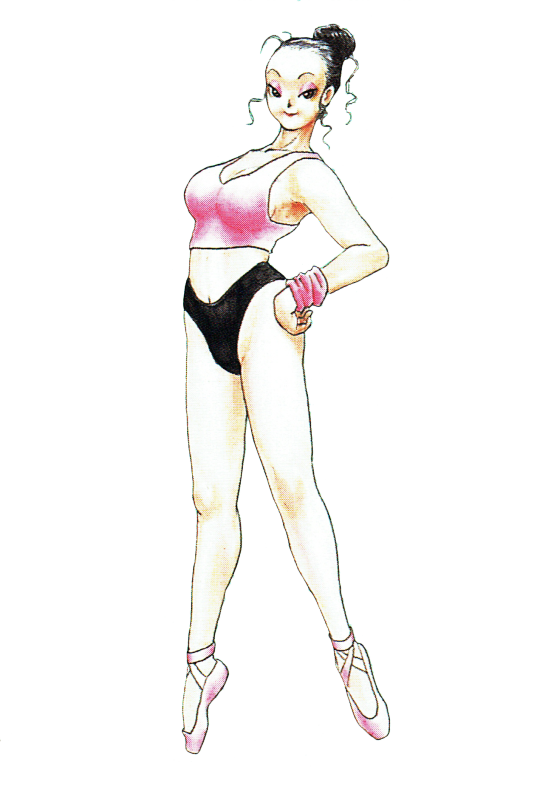
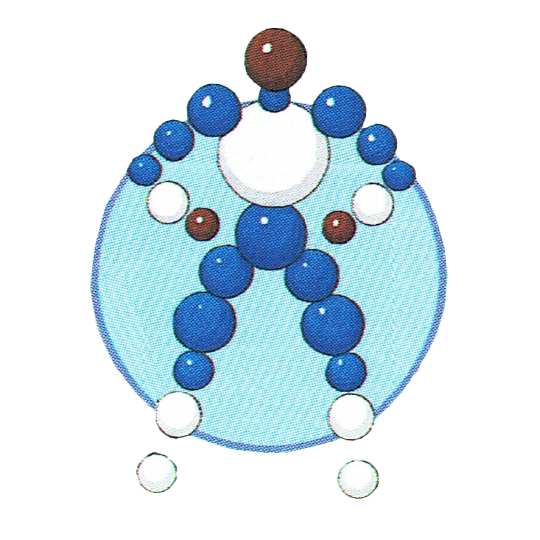

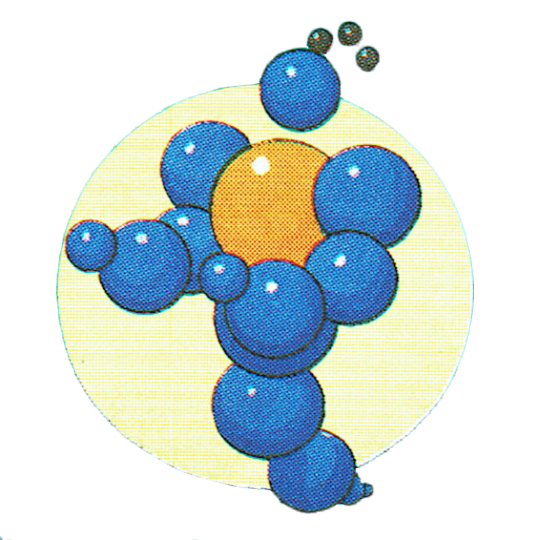

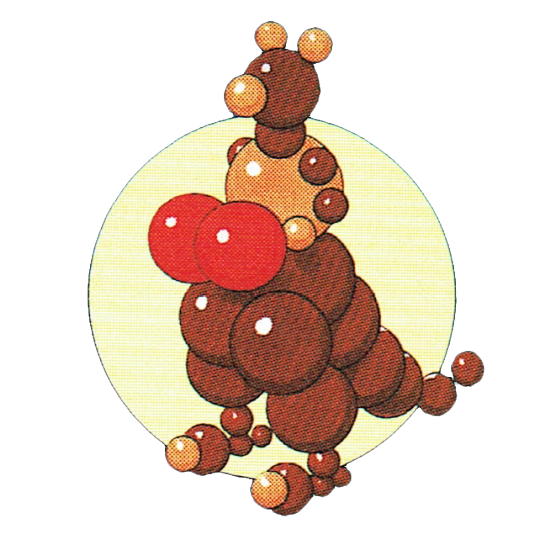

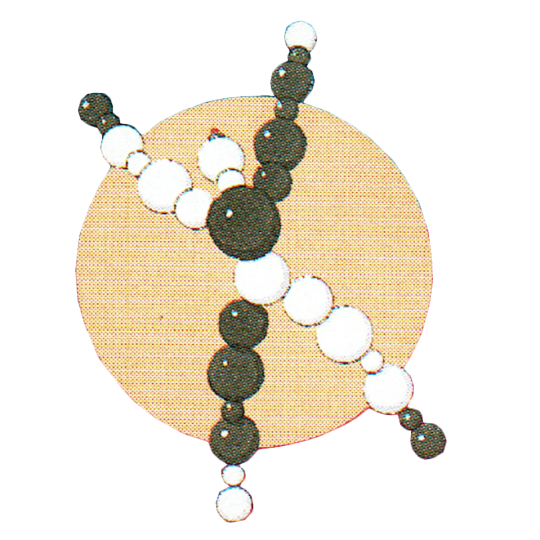
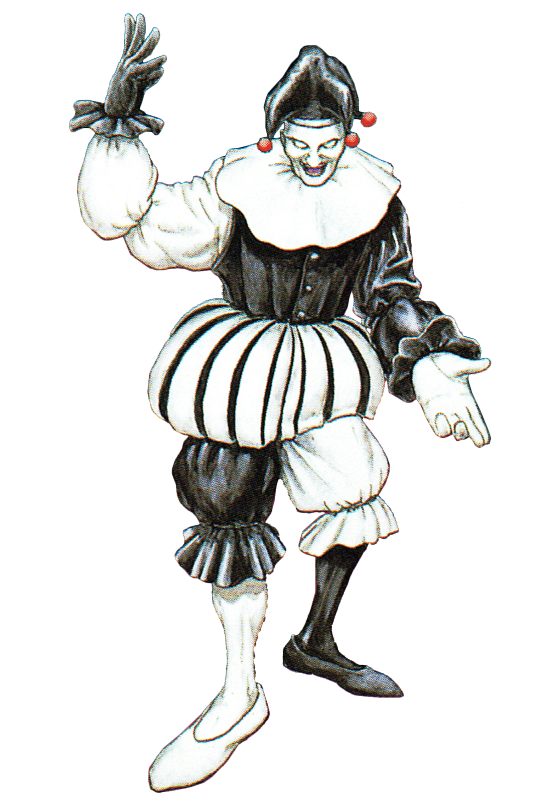
And, as is often the case in Japanese game manuals, comic strips can often be found…
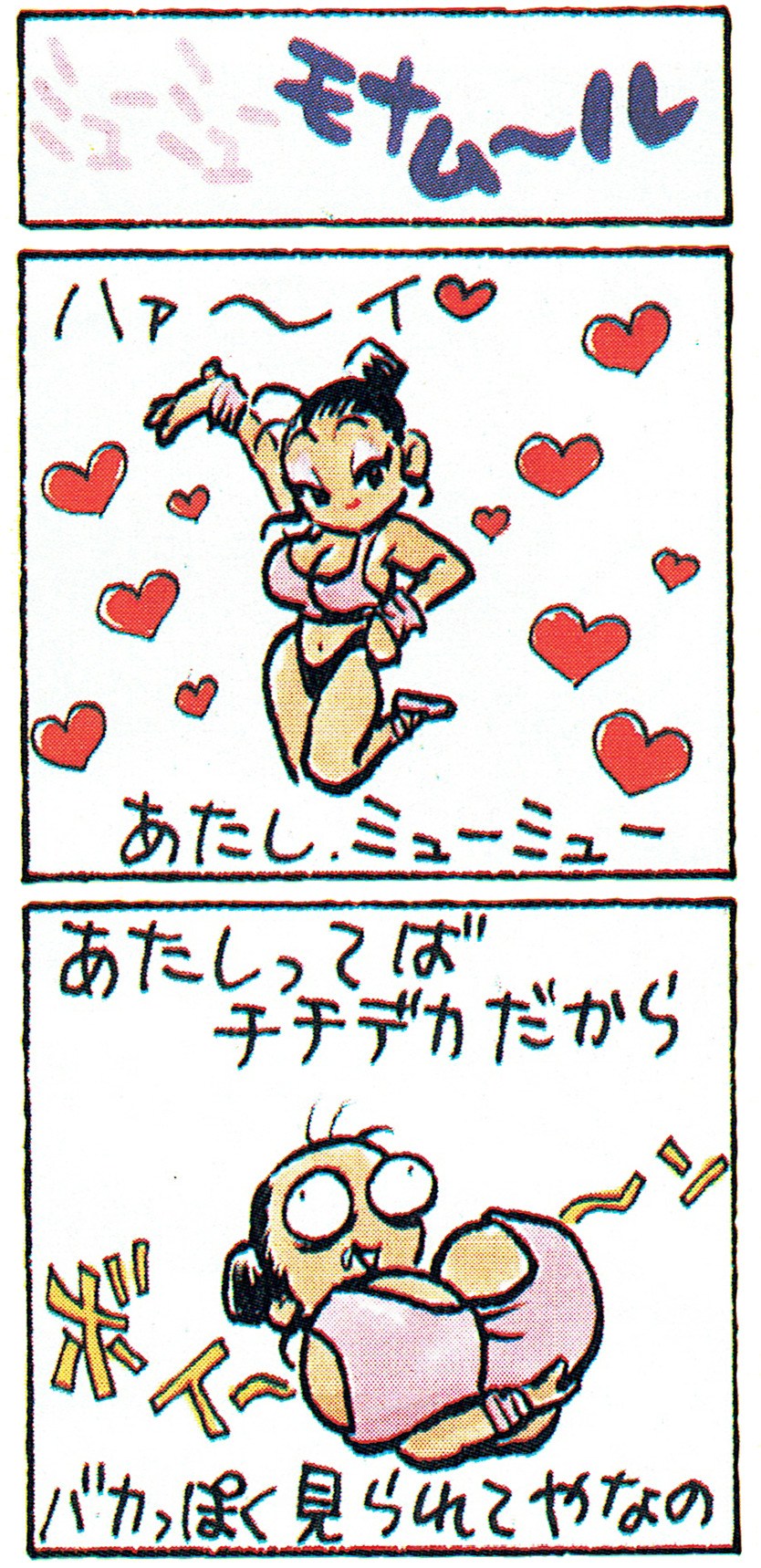
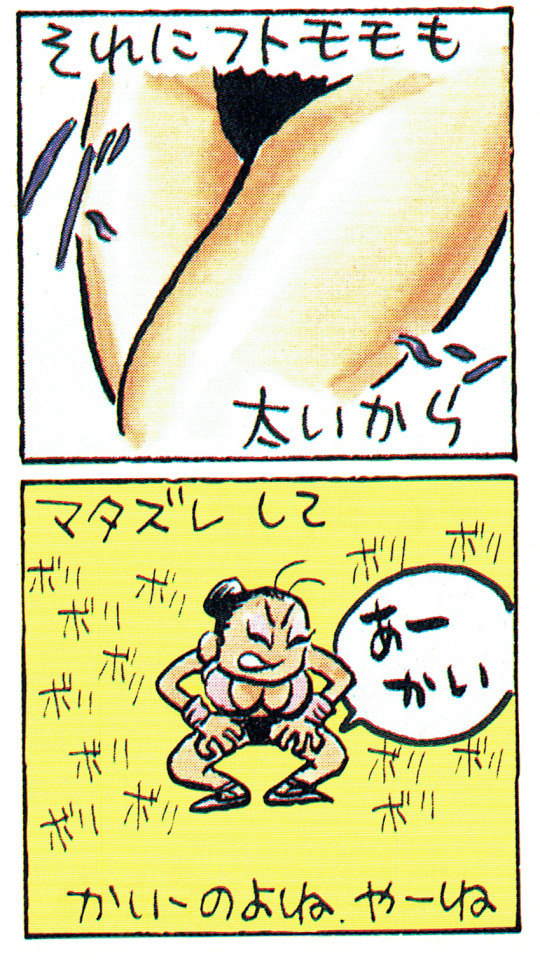
So, what news has me the most excited this week? Nope, it’s nothing related to PAX East (which I was unable to attend, unfortunately). Instead, there’s word that the Brick Theater is reviving the Game Play festival! It’s been a summer staple (alongside the New York Asian Film Festival) for years now, and I was super bummed that there wasn’t one last July (I also feared the worst, that the plug had been pulled entirely).
Anyhow, nothing has been announced because they’re still gather applications. So if you happen to have an idea for a stage production that’s video game related, click this link. Oh, and for anyone interested in my write up of Game Play 2015, here ya go.
The other exciting bit of news is this footage of 3DS Space Harrier, Galaxy Force II, and Power Drift, the 3DS versions running on a PS4 with a PSVR, courtesy of posthumanwanderings…
youtube
I seem to recall Yu Suzuki saying that he’d love to have Space Harrier in VR at the very least… though I believe the following is just a test produced by hardcore Segaphiles.
Sticking with Sega, though also back to the subject of theater; remember TOKYOHEAD, that play in Japan that depicted the trials and tribulations of top ranked Virtua Fighters? Well I recently came across this video…
youtube
… and this article, which mentions TOKYOHEAD. The production utilized motion capture tech called DL-EDGE that allowed the actions of actors on stage to be mimicked by in-game character (which I thought was what was happening in one photo, in my write-up)…
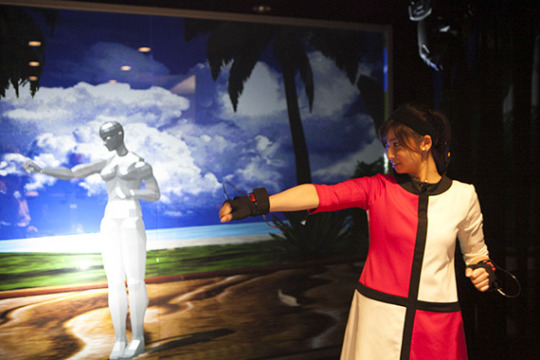

One last bit of stage theatrics; please enjoy this handshake from the stage production of Persona 3 (via emperorsfortune)…
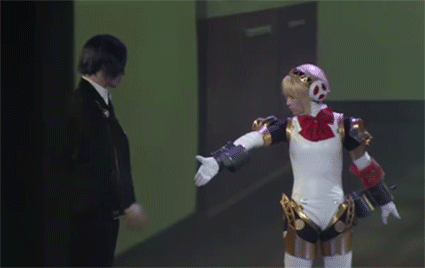
For whatever reason, this photograph has me imagining a woman from the future, sent back in time to save humanity, but instead of arriving in some back alley street light in the Terminator, it’s in the middle of a game center…

It’s actually artist Mariko Mori, and you can check out other photographs from the same series, I think (including one of her dressed like a sexy android hanging next to a Sonic & Knuckles demo station), here.
Speaking of PDFs, during a regular scheduled attempt to gather anything I can find regarding The Flying Luna Clipper, I came across this link, which itself contained one to an archive of MSX Magazine…
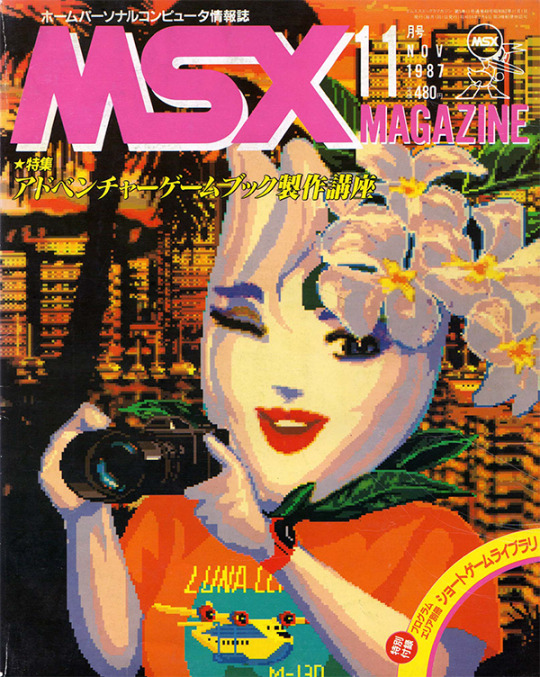
Despite being the cover story, there isn’t much intel, or so it would seem…


… Yet the whole issue is definitely worth leafing through, especially if you’re obsessed with old Japanese PC hardware designs as much as I am.
Please enjoy this bit of fancy footwork from Tekken 3 (via sixteen-bit)…

Sticking with the subject of fighting games; the latest from the CDTcrew is perfect for anyone that’s a fan of Street Fighter 2 and seizures…
youtube
Which fighting game glitch do you prefer? This one from King of Fighters 2002, or this one from Ultimate Mortal Kombat 3?
Okay, time to chill for a bit. For six hours exact. That’s how long the sound of the Arwing’s engine, from Starfox, goes on for (there’s also a twelve hour version, for anyone interested)…
youtube
This week’s recommended reading is courtesy of Kotaku, which recently interviewed individuals from two local businesses that specialize in console repair. Here’s some excerpts from 'Let Him Fix It': The Battle Over Who Gets To Repair Your Consoles…
““I’ve been fixing stuff since I was a little kid, scavenging garbage,” GorillaStomp said, not looking up from the Xbox he was dismantling with a screwdriver. He was watching a For Honor Twitch stream while removing pet dander and cigarette detritus from the Xbox’s jammed disc tray. “Basically, I went from Legos to real-life troubleshooting.”…
… Back in 2008, GorillaStomp interviewed for a job at 8-Bit And Up with its owner, Joe. “It was the weirdest interview I’d ever had,” he told me. Joe asked if he’d ever worked as a repair guy. GorillaStomp said, “No, but last summer, I fixed seven PS2s for my buddies.” Joe hired him.”
Here we have a promotional vid for Atari, produced in 1981. It’s actually quite excellent, as far as corporate propaganda is concerned, thought it’s also a super sexy time capsule (via tvgame)…
youtube
Just a bunch of Super Mario mushrooms, in the corner of a Japanese book store. That is all (via fuckyeahjapanese)…
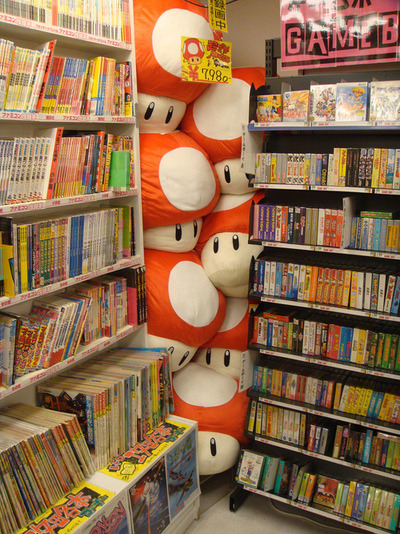
Behold, Moscoso x Psyduck (via altcomix)…

Which piece of Sonic fan art sent to an old video game magazine is better? This one (via sonicthehedgeblog)…
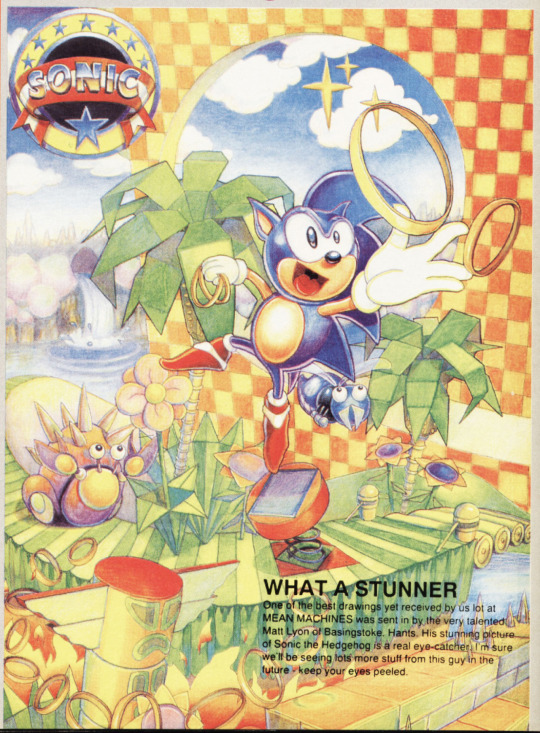
Or this one (via oldgamemags)…
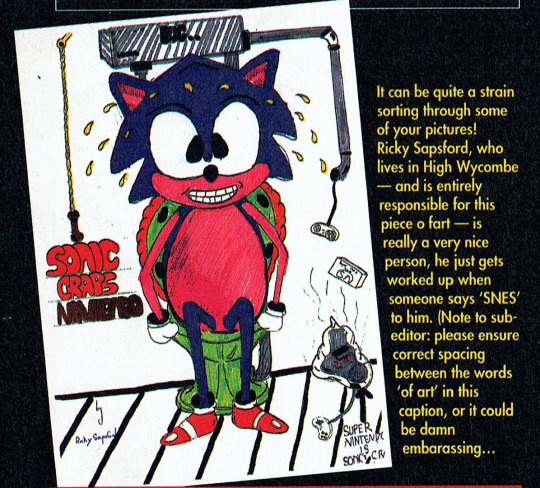
And which Famicom cart (via famicartart) do you find more appealing? This one, for Perfect Bowling…
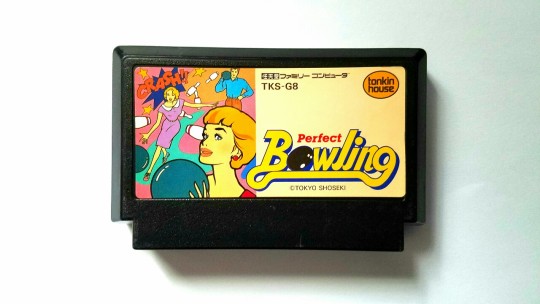
Or this one, for A Taxing Woman…
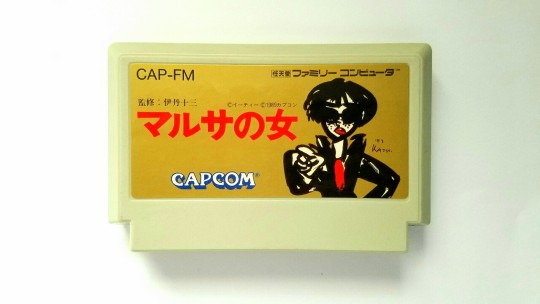
As much as I love a beautifully rendered cover art, sometimes a quick and dirty screenshot also does the job well (via shmups)…

I really have no idea what this image is about, but because it’s Xevious related, I kinda have to share it (via gaijira)…

And last but not least, this is apparently the only decoration in fmtownsmarty’s room…
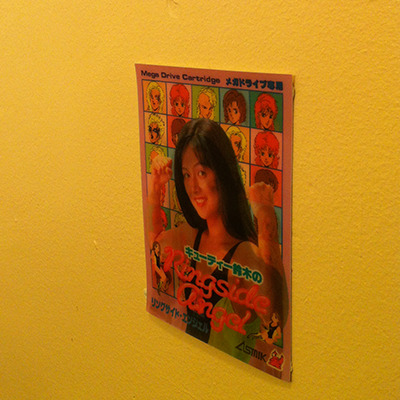

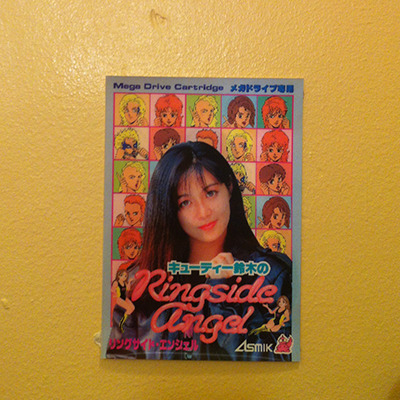
Don’t forget: Attract Mode is now on Medium! There you can subscribe to keep up to date, as well as enjoy some “best of” content you might have missed the first time around, plus be spared of the technical issues that’s starting to overtake Tumblr.
5 notes
·
View notes
Text
a Naughty Dog masterclass • Eurogamer.net
Across the generations, the first-party exclusive ‘prestige game’ has become an important part of the console ownership experience. These large, expensive projects are designed to push the medium to its limits, offering players new experiences with top-tier production values and state-of-the-art technology. Within the upper echelon of studios charged to deliver these halo titles, Naughty Dog has cemented itself as one of the best. The Last of Us Part 2 is the studio’s latest creation and perhaps its most stunning. Beneath its decaying façade lies a gorgeous, beautifully realised experience; it’s a game that applies the multitude of hard lessons learned from prior releases, culminating in delivering Naughty Dog’s largest, most ambitious project to date – but what does that really mean in the context of this game?
Well, when I describe the game as the culmination of the studio’s efforts to date, that’s exactly what I mean. From a technical perspective, it’s difficult to isolate brand new techniques or technologies we’ve never seen before. What you are getting is exemplary execution, right down to the tiniest detail, plus a more thorough exploration of earlier concepts the developers has experimented with in the past. For example, something we couldn’t show in pre-launch embargoed materials is one of the most important concepts that underpins this new game. The Last of Us Part 2 features the largest environments in a Naughty Dog game to date, taking a page from the more open-ended design of Uncharted: The Lost Legacy, but taking the idea to the next level. Character and world rendering have been improved across the board while significant changes have been made to the underlying mechanics enabling a smoother, more enjoyable experience all around.
The original The Last of Us, like Uncharted before it, is a highly cinematic game driven by set-piece moments – it was designed to appear open but it was still ultimately a series of ‘tunnels’. In part, this is also true of the sequel, but the main difference lies in the city itself. Seattle serves as a sort of central pillar around which the game’s more cinematic moments are constructed. Basically, it’s almost akin to a hub, just not in the typical open world sense. At various points throughout the game, your objective involves finding a specific location, but you’re never explicitly told how to get there, nor are you funneled down a specific path.
This is where the game differs from the original – you now have the option to take different streets, explore different buildings and generally experience more of the world at you own pace. There are a lot of places you aren’t required to visit on your journey to the objective, but you will uncover useful supplies and encounters that you could have easily missed. Meanwhile, simple objectives turn into hour-long quests simply by virtue of how open the world is. It’s this aspect that helps the world feel more like an actual place rather than a ‘tunnel’ and it also brings us to our first visual focus – the world itself.
To see this content please enable targeting cookies.
Manage cookie settings
The Last of Us Part 2 – the Digital Foundry tech review. Need we say more?
From the smallest details to the largest structures, The Last of Us Part 2 is remarkably dense. Indoors, the game leans on Naughty Dog’s exceptional approach to pre-calculated indirect lighting. The game seems to utilise a probe system combined with light maps and realistic physically-based materials off which the light plays very naturally. The result are most keenly felt in dimly lit interiors that feel remarkably realistic. It’s not perfect, as interactive objects don’t always blend with the baked lighting, but it works overall – most objects sit realistically in the scene with natural ambient shadowing. This is coupled with a supremely high level of detail with a large selection of prop objects crafted and placed around each room, all of the intricately detailed.
Attention to detail in the rendering is rich and abundant throughout. The fidelity and additional freedom basically work together to make basic exploration more satisfying in this game, heightening the sense of discovery, with each room having its own story to tell. Outside, things are even more impressive. The Last of Us Part 2 does an impressive job in delivering scale to open worlds standards, while delivering hand-crafted micro-detail. Systems-level animation adds a lot to world quality: the billowing grass reacts as the player moves through the environment and the way light plays off building surfaces delivers a remarkable look overall.
The key to creating a convincing world lies in the more subtle interactions: water that reflects, wind that blows, shadows that are cast, glass that breaks – and more. Nailing these details is a key part of building this believable world and The Last of Us Part 2 fares well. Grounding your character requires a careful approach to shadows and reflections. To solve this, Naughty Dog once again appears to employ capsule shadows along with capsule reflections. Basically, using a rough approximation of the character shape, the artists show very soft, natural shadows that interact beautifully with the predominantly indirect lighting. These are also deployed for reflections too – player reflections often missing in many triple-A titles. The game even has its fair share of what look like render-to-texture mirrors, which look exceptionally convincing.
For larger surfaces such as water or wet pavement, Naughty Dog uses a mix of box-projected cube maps and screen-space reflections. There’s nothing especially unique about this, but it’s the craftsmanship on display that matters. If you pay close attention, you’ll notice that the cube maps are very carefully aligned with the scenery allowing the SSR to almost perfectly line-up. This helps avoid the typical SSR artefacts, where on-screen detail isn’t available for reflections, creating discontinuities in motion. Water in general looks wonderful: small streams and water run-off look great and the same is true of the stormy seas along the coast. The Last of Us Part 2 also makes significant use of rain, nearly half of the game’s lengthy run-time features precipitation. The droplets themselves work in tandem with surface effects and lighting to deliver a very atmospheric result. Then we have volumetric lighting which plays a role in establishing atmosphere throughout the game using a technique comparable to Uncharted 4’s delivery.
To see this content please enable targeting cookies.
Manage cookie settings
If you want to understand how well the game runs, and how the experience compares between PlayStation 4 and PS4 Pro, Digital Foundry has you covered.
All of this is coupled with a robust post-process pipeline, enabling the full range of cinematic effects including per-pixel motion blur, film grain and bokeh depth of field. Per-object motion blur has been a staple of Naughty Dog games since Uncharted 2 and the implementation here is perhaps the best yet. The visual artefacts present in Uncharted 4 look to be cleaned up and as it’s combined with film grain, this allows for cleaner motion all around (as always, however, motion blur intensity can be adjusted in the menu system). Bokeh depth of field primarily shows up in cinematics but is also used while aiming or executing a stealth kill. Again, it looks excellent.
Interaction with objects and materials is also very impressive. The Last of Us Part 2’s new rope physics are highly realistic, for example. At various points, you’ll need to pick-up and throw a rope or extension cable and it has its own physics system. Not only that, as you move towards or away from the point of origin, Ellie will either wrap or unwind the cable in real-time – a nice touch. Glass is featured heavily throughout and I’m quite fond of the animation work of breaking glass: you really get the impression of your character slamming an object against the glass surface to cause breakage rather than just swinging and clipping through it with no sense of impact. Another important detail is the blood system, which dials up the feeling of consequence, unease and flat-out horror you get from combat. After you take out an enemy with a particularly nasty attack, you might notice blood slowly pooling around the victim, something that even occurs if the enemy is killed in water.
One of the game’s biggest triumphs is in its character rendering. Again, it comes across as a culmination of the techniques Naughty Dog has been working on across the generation, but the end result is simply exceptional. It starts with the cinematic sequences which are predominately rendered in real-time, like Uncharted 4 before it. As expected, the level of detail here is almost absurd, right down to the uncanny sub-surface scattering of light through skin, the level of detail right down to the fingertips and crucially, the quality of eye rendering. This is backed up by the same level in attention to detail not just in cloth rendering, but in its animation too. All told, the quality of the models, animation and acting here is perhaps the best I’ve seen to date. After a while, it feels as if you’re watching real people rather than 3D models. The seamlessness of it is also worth mentioning – again, it’s nothing new, but the transition from cutscene to gameplay is just so effective.
Animation quality is also on another level. Naughty Dog is well known for its expert use of animation blending but for this game, the team uses the concept of motion matching – a technique designed to ease the combination of character movement with animation data. It works by capturing lots of animation data and then building a system to interpret that data in a responsive, realistic way. What this means is that all the basic animations including running, walking, turning, ducking and more all exhibit physically correct motion without compromising responsiveness. So yes, The Last of Us Part 2 is a more responsive game than Naughty Dog’s previous works. Moving through the world feels slightly snappier all around, but it’s the fluid transitions between actions that sticks out the most.
To see this content please enable targeting cookies.
Manage cookie settings
The classic E3 2018 gameplay demo. The final game gets close – very close – but perhaps the final experience doesn’t quite hit this level.
Combat also feels better as a result. The melee battles are a tremendous upgrade – each hit causes the enemy to flinch and bend, and it’s so much more visceral this time. This is enhanced by what I feel is dramatically improved artificial intelligence – something the original game really struggled with. This time around, the reactions and behaviour of both enemies and your companion feel more natural. It’s rare that your companion will run out into the middle of a field when you’re supposed to be in stealth, for instance, and enemies search for players in a more believable fashion. I also appreciate how larger battles play out with enemies moving around the field, with companions actually getting some decent, worthwhile shots in. The enemy can even circle around in an attempt to get the drop on you – it just feels more dynamic as a whole.
These are the aspects of the game that stand out to me most, but in truth, I expect everyone who plays it will have their own takeaways. The point is, after playing this game through from start to finish, I walked away impressed. We’ve seen a lot of top tier AAA releases this generation and it’s clear that a lot of other developers are delivering impressive results as well, but there’s just something about these Naughty Dog productions that stands out. This level of polish within the context of such a large game is difficult to beat.
The Last of Us Part 2’s mix of hyper-detailed environments with natural lighting and materials alongside expressive, beautifully animated characters never ceases to impress. It’s just as high quality a production as you would have expected from the beginning. It also features an exceptional soundscape with full 7.1 audio support and a huge dynamic range if you select the option. It’s especially immersive in areas where it’s rainy – the sound of droplets playing off objects around you adds a lot.
If I had to level any complaints at the game, it would be that perhaps the final game doesn’t quite match up to the full promise of the incredible E3 2018 demo embedded above. Don’t get me wrong, it’s close, but the animation work and shading doesn’t quite live up to the full promise of that remarkable vertical slice. However, when you stand back and look at the achievement on the whole, this is an excellent sequel that greatly improves upon the core gameplay and level design of the original game. The story may not work for everyone – though I did enjoy it – but there’s no question that this is a superior gameplay experience, integrated within one of the most impressive technological achievements of the generation.
from EnterGamingXP https://entergamingxp.com/2020/06/a-naughty-dog-masterclass-%e2%80%a2-eurogamer-net/?utm_source=rss&utm_medium=rss&utm_campaign=a-naughty-dog-masterclass-%25e2%2580%25a2-eurogamer-net
0 notes
Text
Title Blazing Chrome Developer JoyMasher Publisher The Arcade Crew, Allone Works, Seaven Studio Release Date July 11th, 2019 Genre Action Platformer Platform PC, Nintendo Switch, PS4, Xbox One Age Rating T for Teen – Blood, Fantasy Violence, Use of Tobacco Official Website
I’ve actually been following Blazing Chrome via Twitter updates for quite a while now. I was following the game before I knew exactly what it was or who it was developed by, mostly cause I was attracted by the retro art style. When I learned it was by the fine folks at JoyMasher, who made Odallus: the Dark Call, my interest was piqued. Cause even though I haven’t yet played all the games developed by JoyMasher, the one I have really impressed me with its attention to detail and creativity. Fast forward a few months later, and I finally got the chance to play Blazing Chrome on my Switch. Was this another retro success story, or a cautionary one?
This slideshow requires JavaScript.
The premise of Blazing Chrome is a mashup of Contra and the Terminator franchise. Robot forces have taken over the world, and all but a small band of mercenaries has been overrun. You’re managed to get behind enemy territory, and are launching a suicide mission to take the filthy toasters out. At the start of the game, you can only choose from Mavra, a bad-ass blonde bombshell, and Doyle, a converted robot on the side of the rebellion. Later on you’ll be able to recruit a couple others, but the premise is the same either way. Fight your way through hordes of bloodthirsty robots, find the AI Core that controls them all, and take it out or die trying.
This slideshow requires JavaScript.
I personally love the 80’s infused machismo of Blazing Chrome, especially cause it captures the essence of the Contra games so perfectly. And yet, this game is no mere copy, it’s more of a muscle flexing love letter to the classic series. Sure, it was obviously inspired by Contra, but it does lots of things great on its own. One example are the interchangeable weapons. You start out with a lowly machine gun, but can find capsules with 3 other weapons. There’s a sort of laser flamethrower, a grenade launcher and a chargeable piercing laser (RIP sweet Spread Shot). Once you’ve collected them, you can switch between them at will, with one proviso – if you die while wielding anything other than the machine gun, you lose it until you find another capsule. And much like Contra, you have no health bar, so one hit and you’re dead. Thankfully, you have a couple of things going for you. One is that you have multiple lives and unlimited continues on all but the hardest difficulties. Another is that you can find booster units that give you nice temporary bonuses, such as a shield, increased speed or attack droid. And it’s a good thing you have all that going for you, since Blazing Chrome is no pushover.
This slideshow requires JavaScript.
Each of the handful of stages in Blazing Chrome is comprised of multiple parts, full of angry robots and punctuated by boss fights. They do a good job of building up slowly and getting more and more difficult, without overwhelming the player. There’s also a huge variety of grunt soldiers, such as metallic mantis bots, gun toting soldiers, automated cannons, cyber ninjas and much more. They’ll all rush at you mercilessly, so it’ll take good reflexes to react accordingly. This is definitely a game that teaches you to learn enemy attack patterns and bring the right weapon for each encounter, especially the epic boss fights. There’s a lot of those as well, and they’re all more than capable of taking you out. While some are definitely more mini bosses, I loved them all. Some of my notable favorites were the following – a sewage swimming worm, a literal robot snowplow that hurls icy death at you, a giant deadly spider, a bio-weapon that spits acid and worms at you and so much more. I have zero complaints about any of the bosses in Blazing Chrome, and felt they were all pretty well-balanced. Which isn’t the same as easy, so get ready to use up a few continues learning their patterns.
This slideshow requires JavaScript.
It wouldn’t be an action platformer without tight controls, and thankfully Blazing Chrome comes through with flying colors on Switch. You hold Y to shoot, jump with B, switch weapons with X and hold R to aim while standing in place. It’s important to note that holding R doesn’t lock your gun in that direction, but that wasn’t really an issue for me. Though I do kind of wish that you could also hold ZR instead, just cause my fingers always wanted to press that button by default. And while it is handy using one button to switch weapons, I found that after getting killed the game would randomly pick one of my other weapons to highlight. It would have been preferable if it defaulted to machine gun, since getting killed twice in succession often meant I lost two picked up weapons. Having said that, these issues were hardly game breaking, just a little frustrating. You also have a dodge move by pressing down and B, which can be helpful despite providing no invincibility frames. There’s a close quarters uppercut I didn’t use much, and you can hang from certain structures, though to my surprise you can’t jump through platforms.
This slideshow requires JavaScript.
Visually, Blazing Chrome is just as wonderful as the games that inspired it. It’s full of color, complex sprite work and wonderful diversity. I can’t express enough how great the creatures in this game were. You’d think they’d all just be generic robots, but there’s so much more. A good example is the bio-facility weapon full of organic horrors, such as bloated flies and crawling freaks. Musically, the game is still great, but perhaps a little less noteworthy. There were a couple of tunes that appealed to me, and great sound effects, but nothing nearly as catchy as Super Contra. Hell, I was actually hearing music from Super Contra in my head as I played through many levels. But still, the aesthetic design of Blazing Chrome is one of its highest points.
This slideshow requires JavaScript.
I had almost no complaints about Blazing Chrome, other than a couple minor issues. One was the aforementioned control quirks, which could have easily been fixed with a drop down menu that paused the action. More problematic were a couple sections where the action slowed down noticeably. Both instances were in boss fights, so I halfway wondered if that was an intentional design choice. Because other than those, the game flowed fast and furious. Otherwise, I had no substantive complaints about the game whatsoever.
This slideshow requires JavaScript.
Blazing Chrome is another success story from the folks at JoyMasher. It’s a ton of fun and has surprising longevity. Once you beat the game once, on any difficulty, you’ll unlock all the other goodies the game has to offer. These include new playable characters, a harder difficulty, mirror mode and even a boss rush. That last feature is one I’m shocked I’ve never had in a Contra game before, and it makes perfect sense to include here. While it’s true you can get through Blazing Chrome in a few short hours, it’s time well spent. This is one of the few games I have played more than once just cause I enjoyed it so much, despite no achievements for doing so. Oh and while I didn’t try it out, Blazing Chrome also has local co-op, for the truly faithful Contra experience. While this probably won’t make any fans out of those who hate the genre, it’s a wonderful present to old fans like myself. And for $16.99, it’s a very affordable adventure. I’m pleased by the latest from JoyMasher, and can’t wait to see the next modern retro classic they have up their sleeves!
[easyreview cat1title=”Overall” cat1detail=”” cat1rating=”4.5″]
Review Copy Provided by the Developer
REVIEW: Blazing Chrome Title Blazing Chrome
0 notes